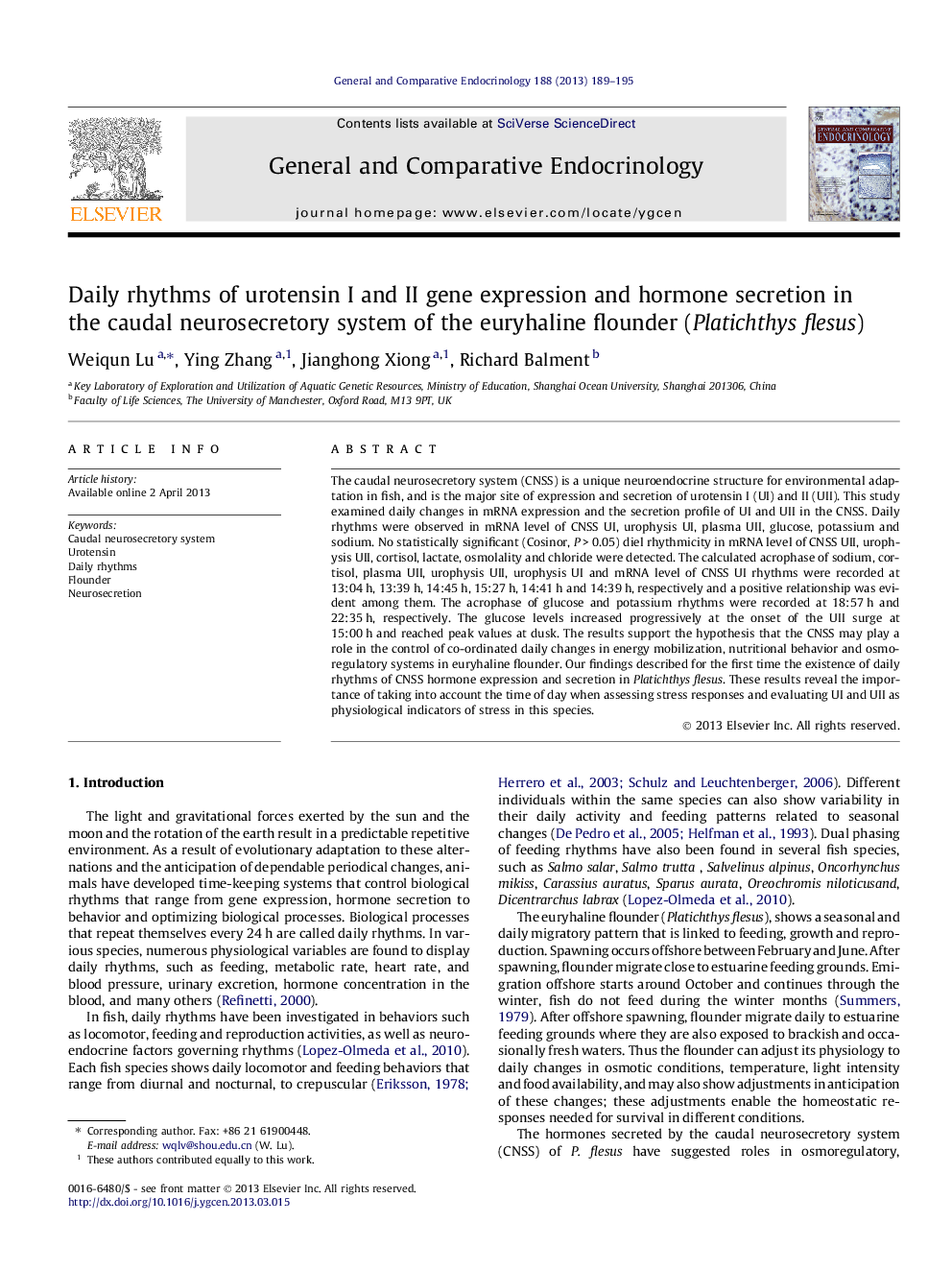| Article ID | Journal | Published Year | Pages | File Type |
|---|---|---|---|---|
| 5901363 | General and Comparative Endocrinology | 2013 | 7 Pages |
Abstract
The caudal neurosecretory system (CNSS) is a unique neuroendocrine structure for environmental adaptation in fish, and is the major site of expression and secretion of urotensin I (UI) and II (UII). This study examined daily changes in mRNA expression and the secretion profile of UI and UII in the CNSS. Daily rhythms were observed in mRNA level of CNSS UI, urophysis UI, plasma UII, glucose, potassium and sodium. No statistically significant (Cosinor, PÂ >Â 0.05) diel rhythmicity in mRNA level of CNSS UII, urophysis UII, cortisol, lactate, osmolality and chloride were detected. The calculated acrophase of sodium, cortisol, plasma UII, urophysis UII, urophysis UI and mRNA level of CNSS UI rhythms were recorded at 13:04Â h, 13:39Â h, 14:45Â h, 15:27Â h, 14:41Â h and 14:39Â h, respectively and a positive relationship was evident among them. The acrophase of glucose and potassium rhythms were recorded at 18:57Â h and 22:35Â h, respectively. The glucose levels increased progressively at the onset of the UII surge at 15:00Â h and reached peak values at dusk. The results support the hypothesis that the CNSS may play a role in the control of co-ordinated daily changes in energy mobilization, nutritional behavior and osmoregulatory systems in euryhaline flounder. Our findings described for the first time the existence of daily rhythms of CNSS hormone expression and secretion in Platichthys flesus. These results reveal the importance of taking into account the time of day when assessing stress responses and evaluating UI and UII as physiological indicators of stress in this species.
Related Topics
Life Sciences
Biochemistry, Genetics and Molecular Biology
Endocrinology
Authors
Weiqun Lu, Ying Zhang, Jianghong Xiong, Richard Balment,
